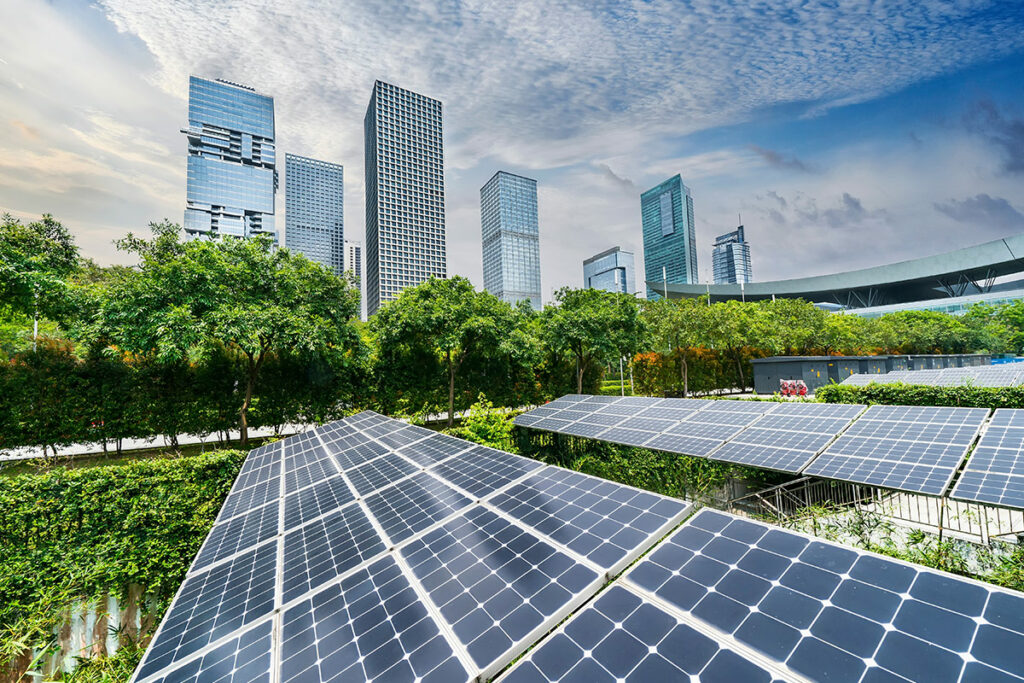As the world becomes increasingly aware of the importance of renewable energy, architects must consider incorporating these technologies into their designs. Not only does this help the environment, but it can also save businesses money in the long run. In this article, we will explore some of the benefits of renewable energy in architecture and discuss why it is so essential for the future of our planet!

What Is Renewable Energy?
Renewable energy is a type of energy that comes from natural resources such as sunlight, wind, tides, and geothermal heat. These resources are renewable, meaning they’re naturally replenished. That’s in contrast to fossil fuels, such as coal and oil, which come from nonrenewable sources.
Renewable energy technologies include solar, wind, hydropower, biomass, and geothermal power. Solar power is the technology used to convert the sun’s light into electricity. Solar panels do this by using semiconductors that absorb sunlight and create an electric field across the silicon cells in the panel. The electric field causes electrons to flow through the cell, generating direct current (DC) electricity. Wind turbines work similarly; they use large blades to catch the wind and convert its kinetic energy into mechanical energy that can be used to generate electricity or pump water.
Hydroelectric dams are another common type of renewable energy generation facility. A dam is built across a river to create a reservoir of water behind it. When the water is released from the reservoir through turbines, it spins the turbines, generating electricity. Biomass is renewable energy from organic matter such as wood, manure, and crops. Biomass can be used to generate electricity or produce heat and biofuels.
Geothermal power plants use the earth’s heat to generate electricity. The plants are built over areas with a lot of geothermal activity, such as volcanic hot spots. Water is pumped down into the earth, heated by the hot rocks below. The steam produced by this process turns turbines, which generate electricity.
Why Is Renewable Energy Important?
There are many reasons why renewable energy is so vital. For one, it is a clean energy source that does not produce greenhouse gases or other pollutants. This is in contrast to fossil fuels, which release harmful emissions into the atmosphere.
Renewable energy is also sustainable, meaning it can be used repeatedly without running out. On the other hand, fossil fuels are nonrenewable and will eventually run out. Additionally, renewable energy is often less expensive than fossil fuels once the initial investment has been made.
The Benefits of Renewable Energy in Architectural Design
There are many benefits to incorporating renewable energy into architectural designs. One of the most important benefits is that it can help reduce a building’s carbon footprint. Facilities are responsible for a large percentage of greenhouse gas emissions, so by using renewable energy technologies, architects can help to reduce these emissions and combat climate change.
Another benefit of renewable energy is that it can be used to power entire buildings or communities in the event of a power outage. For example, a solar-powered facility will still have electricity if a hurricane knocks out power lines. This is because solar panels can store energy in batteries, which can then be used to power the building when there is no sun.
Incorporating renewable energy into architectural designs can also save businesses money on energy bills. Solar panels and wind turbines can provide a building with all or most of its electricity, significantly reducing a business’s energy costs. In some cases, the money saved on energy bills can be used to offset the cost of installing the renewable energy system.
Case Studies of Buildings That Have Incorporated Renewable Energy Into Their Designs
Many examples of buildings have incorporated renewable energy into their designs. One notable example is the Empire State Building in New York City. The building has installed solar panels and wind turbines on its roof, which generate enough electricity to power 25% of the building’s common areas. These renewable energy systems have helped the Empire State Building reduce its carbon footprint by 105,000 metric tons annually!
Another example is the Palms Casino Resort in Las Vegas, which has a solar-powered parking garage. The parking garage has over 2000 solar panels, which generate enough electricity to power the casino’s LED lights. The Palms Casino Resort also has a water recycling system that recycles greywater from the hotel rooms and uses it to irrigate the landscaping. This helps reduce the amount of water the resort uses each year.
The future of renewable energy in architectural design is looking very bright. With technological advances, architects are finding new ways to incorporate renewable energy into their designs. As more people become aware of the benefits of renewable energy, we can expect to see more buildings incorporating these technologies in the future.
Final Thoughts
Renewable energy is crucial to the fight against climate change. By incorporating renewable energy into their designs, architects can help to reduce greenhouse gas emissions and create more resilient buildings. With the right policies in place, we can expect even more progress in using renewable energy in architectural design.




